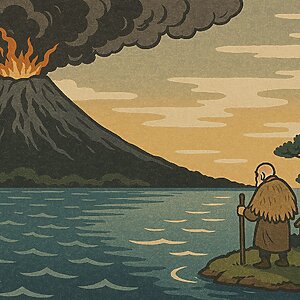
Which is which: the "Yasuke Ume" (a kind of apricot with the word "plum" in its name) or the "Bungo" (a genuine plum)? [Aomori Prefecture]
table of contents
Aomori Prefecture's specialties include plums and apricots. Their plump, ripe appearance evokes the richness of the region's climate
However, in Aomori Prefecture, there are actually apricots that are called "ume" (plums) and plums that are not called "apricots." Even locals get a little confused about the differences between plums and apricots
In this article, we will be looking at the plums and apricots that Aomori is so proud of, and some interesting facts about them. We hope that this article will give you an opportunity to learn about the local flavors
What is the difference between plums and apricots?
First, we will explain the difference between plums and apricots, which is something that everyone seems to understand but is actually quite difficult to understand. Since there aren't many opportunities to think about the difference between plums and apricots, please use this as a bit of trivia

First of all, plums and apricots are both plants of the Rosaceae family, the Prunus genus, and are very closely related species. When they bloom, they have no leaves and have rounded petals. They look and have similar properties, but the differences between them can be seen in the table below
| Fruit size | The sweetness of the fruit | The color of ripe fruit | Ease of seed removal | raw food | English expression | |
| plum | Small | Not sweet | green | The seeds are difficult | × | Ume Or Japanese apricot |
| Apricot | Large | sweet | dark yellow | The seeds come off easily from the fruit | 〇 | apricot |
The biggest difference is whether the fruit is suitable for eating raw
Apricots are known as apricots in English and are considered to be a fruit that is eaten raw. On the other hand, plums bear fruit that is not suitable for eating raw and are mostly used for decoration or for processing
"Yasuke Ume" is an apricot called plum in Aomori Prefecture
Aomori Prefecture is one of the leading apricot producing areas in Japan. The Yasuke plum is an apricot that has been cultivated for a long time in Nanbu Town, Aomori Prefecture. Although it is an apricot, it is called a plum. It is in season around early July

Hassuke is an apricot that is characterized by its large size. While the nationally produced "Heiwa" apricot weighs about 60g, Hassuke fruits weigh about 80g. You can enjoy the thick, crisp texture and rich flavor that is a mix of sweet and sour
Hassuke has long been eaten locally as "umeboshi" (pickled plums). These pickled plums are a little different from regular pickled plums, so we will explain them in a separate chapter
Bungo plums produced in Aomori Prefecture
As mentioned above, what is called plum in Aomori Prefecture includes apricots, but there is no doubt that the prefecture is famous throughout the country for its plums

Aomori Prefecture is famous for its plum variety called "Bungo." Unripe plums are shipped from early July, while fully ripe plums are shipped from mid-July
Plum trees generally prefer warm climates, but Bungo can grow in cooler climates. The reason for this is that Bungo is a natural hybrid with apricots. Apricots prefer cooler climates, so Bungo, which has a similar lineage, is thought to have become a plum that can withstand the cold
Bungo's fruits are large, reaching 40 to 50g in size. Generally, plums classified as large plums weigh over 25g, so you can get an idea of how big they are. The plump, yellow-green fruits look good and are suitable for processing into plum wine and other products
What are Yasuke Ume (Apricot) Umeboshi?
In Nanbu Town, Aomori Prefecture, "Yasuke Umeboshi" is made using the Yasuke plums (apricots) that are produced here. Yasuke Umeboshi are wrapped in shiso leaves. The large Yasuke plums are first salted, then sun-dried, and then individually wrapped in shiso leaves before being pickled
The seasoning for pickling varies from household to household, but it can be just salt, or sugar or sake may be added. The pickling period is about three months
The crisp texture, refreshingly sweet flesh, and the aroma of shiso (perilla) will whet your appetite with Hassuke's umeboshi. Why not give them a try?
summary
Plums and apricots are produced in abundance in Aomori Prefecture. In this article, we have introduced the differences, characteristics, and appeal of each
Apricots called plums and plums that have apricots as their parent may sound a little confusing to outsiders, but each is an essential ingredient that has nurtured Aomori's food culture. Why not try these delicious flavors, refined by Aomori's harsh yet beautiful nature?
We recommend using Hassuke (apricot) to make pickled plums and Bungo (plum) to make plum wine. If you come across them in the souvenir section or when ordering online, be sure to give them a try



![Grapes, melons and cherry? Aomori's surprising fruit kingdom is a story [Aomori Prefecture] 2754709_m](https://jp.neft.asia/wp-content/uploads/2025/05/2754709_m-150x150.jpg)

![[Shimokita Peninsula, Aomori Prefecture] Geopark Shimokita Peninsula. A rich hot spring springs from the northernmost peninsula of Honshu 24734759_m](https://jp.neft.asia/wp-content/uploads/2023/02/24734759_m-150x150.jpg)
![The mysterious world of the Shimokita Peninsula of Geopark: "The northern limit of monkeys on Osoreyama and Butsugaura" [Aomori Prefecture] 25110883_m](https://jp.neft.asia/wp-content/uploads/2022/11/25110883_m-150x150.jpg)
![The gorgeous "Noheji Gion Festival" and Kitamae Ship port call "Noheji" [Aomori Prefecture] 4031_Noheji Gion Festival](https://jp.neft.asia/wp-content/uploads/2023/03/27d8816076df6701eb2d6ec6c91e5169-150x150.jpg)
![5 recommended pilgrimage to the holy sites of "Flying Witch" recommended by locals! [Hirosaki City, Aomori Prefecture] Fujita Memorial Garden](https://jp.neft.asia/wp-content/uploads/2024/04/25cbd3cc9054d78f745f2fa3f68cf706-150x150.jpg)
![[Aomori Prefecture] 6 recommended beaches in Aomori Prefecture! Aomori Prefecture is full of oceans, including the Pacific Ocean, the Sea of Japan, Mutsu Bay, and the Tsugaru Strait! Aomori_Asamu](https://jp.neft.asia/wp-content/uploads/2023/07/0f45f17b8ba09afb066a09880e47091d-150x150.jpg)
![A trip to Aomori Prefecture depicted in the 9th journey of the anime "That's Journey" [Aomori Prefecture] Enmei Jizo](https://jp.neft.asia/wp-content/uploads/2025/09/f7ab461e83edd7423e8730afd90212c9-150x150.jpg)











